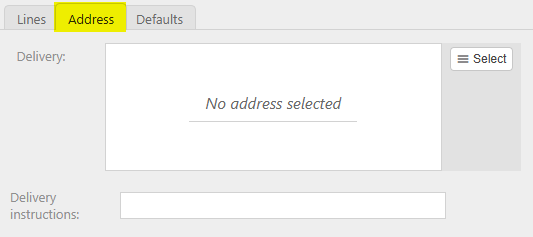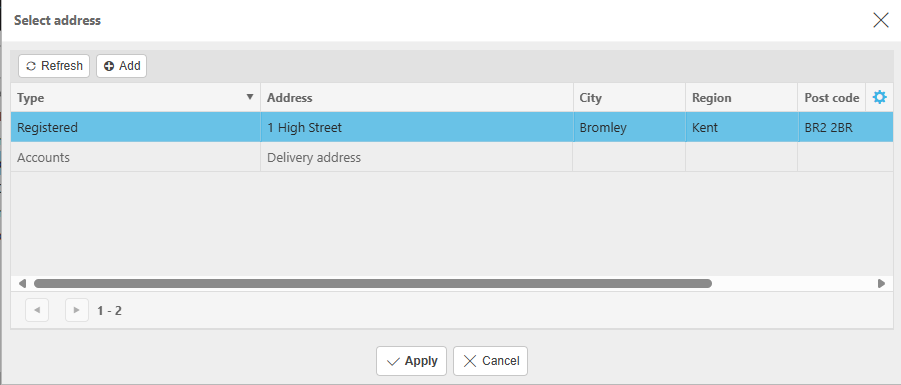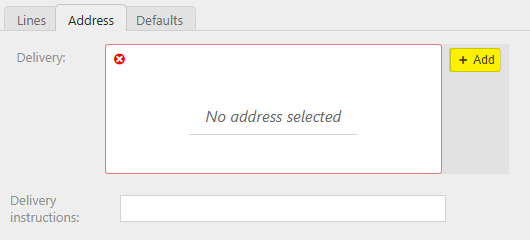Purchase Orders
This feature is used to order Purchase products. Orders can be created from Requisitions or from scratch.
The screenshot below shows a sample grid of purchase orders, which includes some key information.

The icons
 = Draft.
= Draft. = Approved.
= Approved. = Error.
= Error.Doc #: This is the unique document code.
Supplier: The Supplier that is being ordered from.
Order type: This will be the order Document type.
Gross: The gross cost of the request.
Tip
To modify the columns displayed, select
 on the top right of the page, then tick/untick the information you want to hide or display.
on the top right of the page, then tick/untick the information you want to hide or display.
How to view Purchase Orders
Viewing a Purchase Order
Select Purchases / Orders from the Main section of the pulse menu -
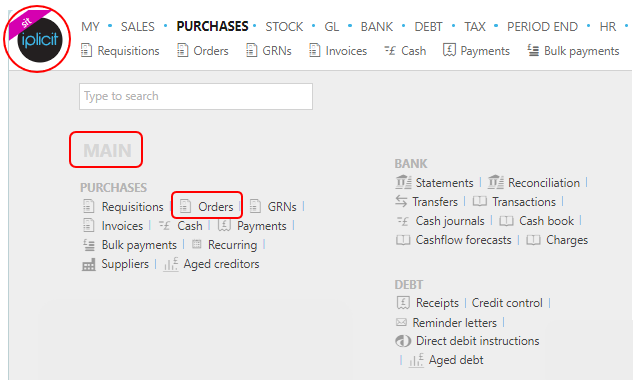
Note
This is an example screen shot of the pulse menu.
Position of the menu items within pulse will vary according to available options and dependant on personal screen resolution.
or from the Main Menu select Purchases then Orders -

or enter Purchase Orders in the Quick Launch Side Menu.

This will then show the Purchase Orders on the system where normal customisation of Sets can be used. Also, depending on User roles, the My/All option will be showing.

Tip
To modify the columns displayed, select  on the top right of the page, then tick/untick the information you want to hide or display.
on the top right of the page, then tick/untick the information you want to hide or display.
How to create Purchase Orders
Create a Purchase Order
Select Purchase Orders from one of the options as shown above in Viewing a Purchase Orders.
Press New or New from Template.
This will display the available Document types as per the system settings.
Select the required document type then press Create.
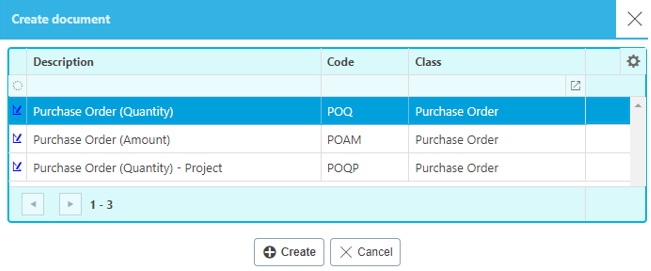
Note
The Orders listed above differ slightly in their operations:
- Purchase Order (Quantity) allows for part deliveries based on the quantities per line.
- Purchase Order (Amount) allows for part deliveries based on the value per line.
- Purchase Order (Quantity) Project allows for part deliveries based on the quantities but must have a Project in the Heading section of the transaction before it can be Saved.
Enter a Supplier.
Note
If Authorisation workflow is enabled, then the Supplier must be authorised before it can be used within the Purchase Order.
Enter a description. If Description required option has been ticked in the Document type, then this field will be mandatory. It will be automatically entered if a Default description was entered in the Document type.
Fill in the remaining fields based as required.

Order Type: This will be auto filled with the Document type selected in step 2.
Order Date: The date of the order.
Note
This date will default to the current date unless the Don't default current date option is ticked in Others tab within the Document type. In this case, when a user creates a new document this date is left blank.
Delivery date: The date of the delivery. If Delivery date required option is ticked for the selected Document type, then this date is mandatory.
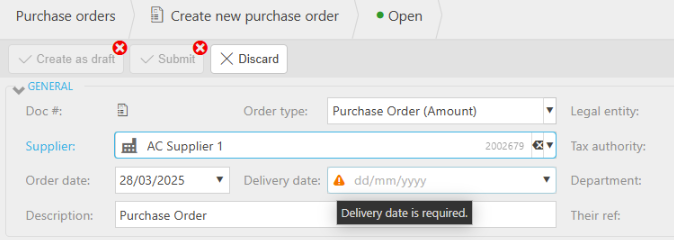
To location: This is the Stock location that the Purchase products are being ordered to.
Legal entity: Pre-populated with the default Legal entity set within Document types, but this can be overwritten.
Department: Select a Department from the dropdown list.
Stock date: This date will default to the Invoice date. It can be changed, but will reset to the Invoice date if the latter is changed. If this date differs from the Invoice date, then a
 icon will show with a warning message saying Stock date / document date mismatch.
icon will show with a warning message saying Stock date / document date mismatch.
Note
Stock date date will only show if the Document type has Stock option selected and Enable stock selected in the resulting Stock tab.
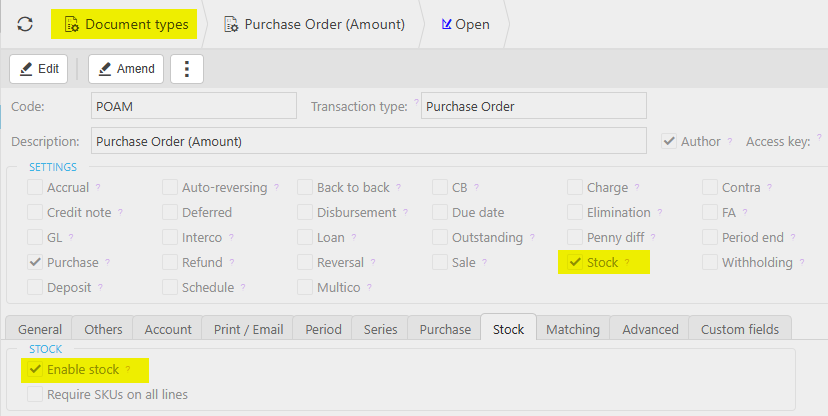
Their Ref: The unique reference given to identify the document. If Their ref required option has been ticked in the Document type, then this field will be mandatory.
Responsible: You can select a Resource to be responsible for the order.

Tip
To modify the columns displayed, select
 on the right of this section, then tick/untick the information you want to hide or display.
on the right of this section, then tick/untick the information you want to hide or display.Stock date: If this date differs from the Stock date in the header section, then a
 icon will show with a warning message saying Line stock date / document stock date mismatch.
icon will show with a warning message saying Line stock date / document stock date mismatch.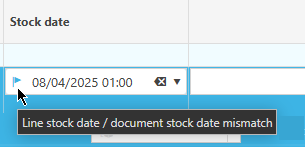
Product: This is the Product being ordered.
Account: If a Product is being used, this will be auto-completed otherwise select an Account from the available list.
Description: Depending on the Force change setting in Chart of Accounts

If the Force change is not ticked, then the Description field will be auto-filled ...

... however it can be edited.

If the Force change is ticked, then the Description field will be blank and you will be forced to enter a description.

Tax Band: The Tax band can be selected here.
Unit: This is the Unit to measure the Product.
Qty: This is the quantity of the Product.
Unit price: This is the price per unit of the Product.
Warning
If the line items exceed the budget, if the Budget exists, then a Budgeting tab will appear.
When Save is selected then a warning message shows to warn the user that the Budget limit has exceeded.

The User can either Accept the figures, or return to the Purchase Order by selecting Edit.
Posting attributes
- The posting attributes are derived from the Chart of account rules related to the Account code. Common attributes include Cost centre and Department but can also include custom attributes.
If there is a requirement to buy from a Supplier and have the goods delivered where the tax authority treatment is different, then set the Supplier up as a Multi Tax Authority Supplier.
Select either Submit once happy with details or Create as draft to be able to edit further before submitting.
Note
Returning to this document via the Edit option will notify other users viewing the same document that it is being edited.
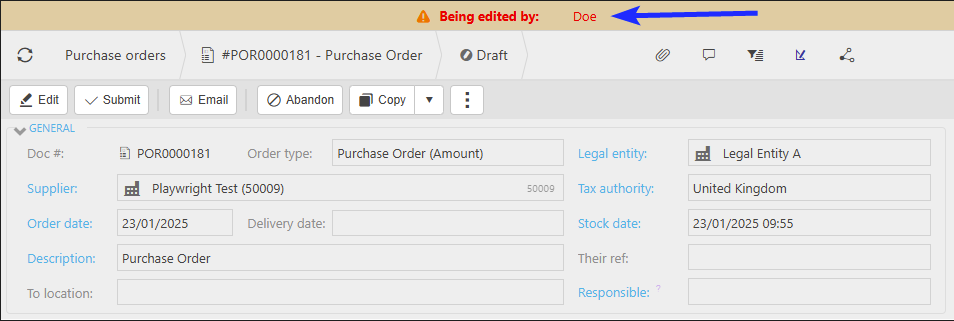
- Once the order is submitted it can be Received.
How to invoice, receive or write-off Purchase Orders
Invoice, receive or write off a Purchase Order
Orders can be converted to Invoices, GRNs or Written off by selecting the purchase order then selecting the action needed.

Note
These dropdown options will be the options selected in Matching tab in Document types.
How to copy Purchase Orders
Copy a Purchase Order
Rather than filling out a new purchase order, you can copy pre-existing ones to speed up the process. This is particularly useful when you are creating the same purchase order frequently.
Select the pre-existing order that you would like to copy.
Press either Copy Exact or Copy to template.

Updated November 2025
